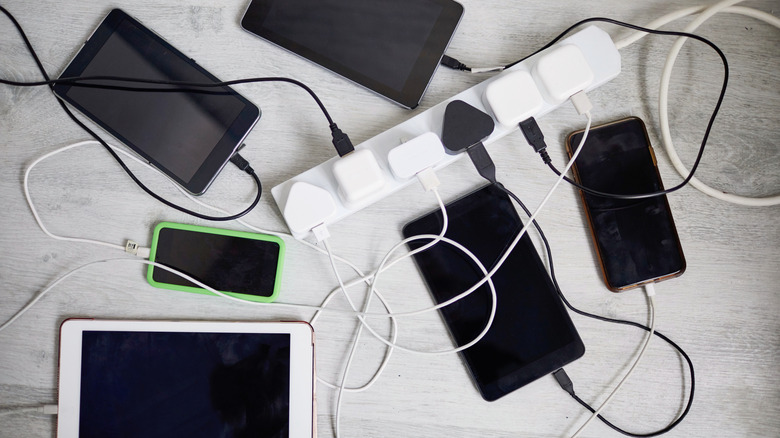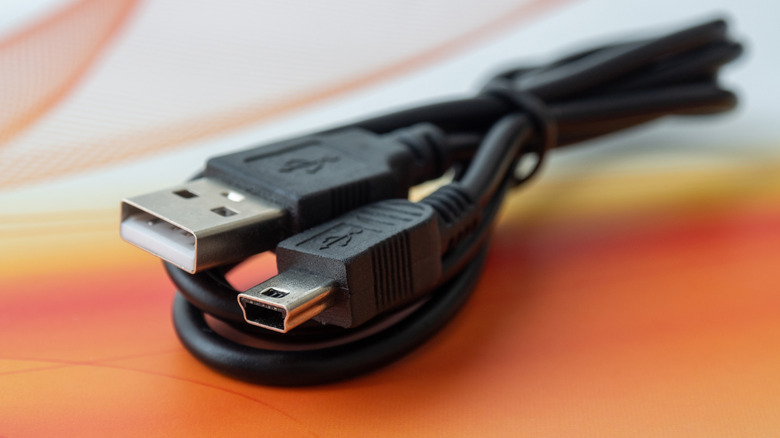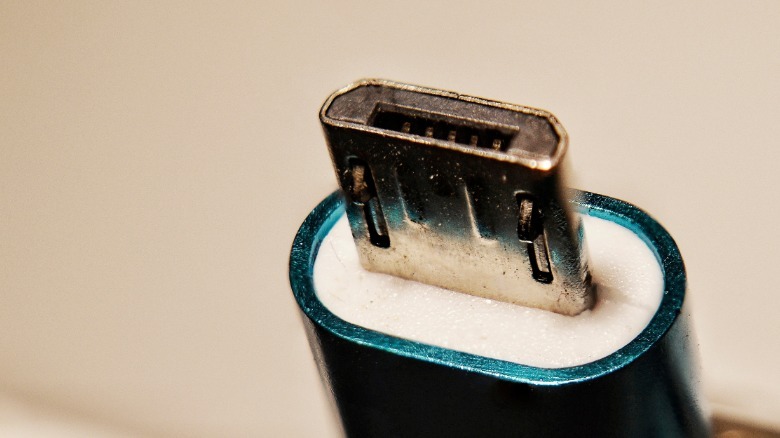Android Chargers: All About The Different USB Types These Devices Have Used
While iPhones dominate the US smartphone market, if you venture outside the states, you'll find that Android is the world's most popular OS for mobile devices, and it's not even close. Even within the US, there are many loyal Android users who prefer its flexibility to the more restrictive Apple ecosystem. If you count yourself among that number and have been using Android for a while, you've most likely gone through several iterations of USB chargers during that time. That's because unlike Apple, which has used the lightning cable charger since the iPhone 5 was released in 2012, Android didn't have a standardized charging system until the USB-C came into widespread use, thanks to the European Union's Common Charger Directive that made it the standard across its 27 member countries.
While smartphone manufacturers have until December 28, 2024, to implement this change, many got a head start and transitioned to USB-C well before the deadline. Thus, if you've bought an Android device in the past couple of years, it's likely already equipped with a USB-C port. Still, if you're a dedicated Android user, your drawers are likely overflowing with USB cables from earlier eras, and trying to make sense of all of them can be challenging, especially if you're trying to figure out which one to use with one of your older devices. While it might seem like there's no method to the USB charger madness, once you become familiar with the different types, you'll be able to identify the right cable for your device pretty easily.
The early days of Android chargers
If you've used Android phones since they were first introduced, you may have come across the USB-A to USB-B charger. These are among the oldest phone chargers out there and are often referred to as the standard USB cable. Users would plug the USB-B end of the cable into their phones and the USB-A cable into a computer or wall adapter to charge their devices and transfer data. While these chargers were used with some Android phones, they were more commonly used with printers, cameras, and computers.
The USB-A to Mini-USB was one of the first chargers to become widely adopted by Android manufacturers. One of the cable's most appealing aspects was its smaller size, which made it a good fit for mobile devices. Some of the best Android phones ever released, including the HTC Hero and the Motorola Droid X, used the Mini-USB.
The USB-A to Micro-USB charger came out a few years after the Mini-USB and went on to become one of the most commonly used chargers. With Micro-USB, Android devices could act as a host (in the same way a computer would) when connected to peripherals like flash drives and memory sticks and read their data. If you have any Android phones lying around your home that were made before 2015, there's a good chance they have a Mini-USB or Micro-USB port.
The Shift to USB-C chargers
If you go out and buy a new Android phone today, it will almost certainly come with a USB-C port. That's because USB-C chargers are quickly becoming the industry standard and support higher data transfer rates and increased power delivery compared to older chargers. USB-C's connectors are reversible, meaning you can plug them into your device without worrying about which way they're facing, making them much easier to use than older connectors.
There are two types of USB-C chargers: USB-C to USB-C and USB-A to USB-C. USB-C to USB-C has become increasingly common and allows users to get the most out of USB-C's capabilities, which include support for protocols like Thunderbolt 3 and USB4. USB-A to USB-C cables act as a bridge between the older USB-A ports and newer USB-C devices. Their main drawback is that they typically don't support the high data transfer rates or power delivery that you get with a USB-C to USB-C cable. Still, they offer a convenient way to connect legacy devices to newer USB devices.



